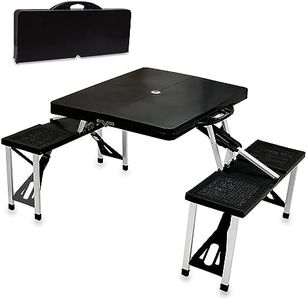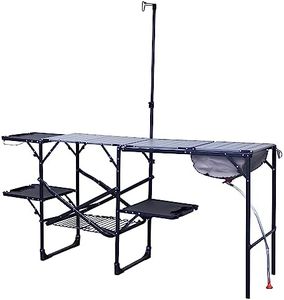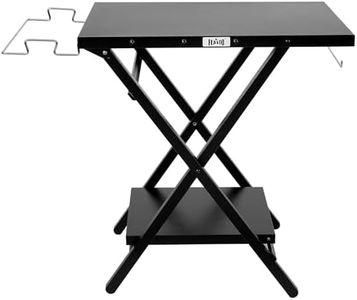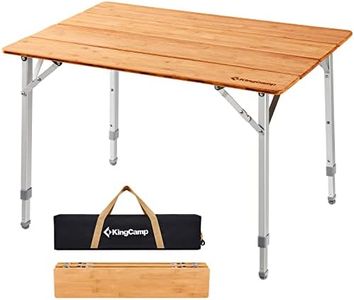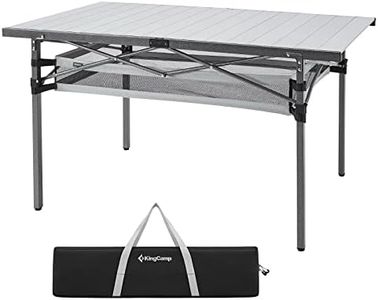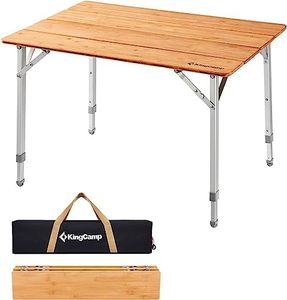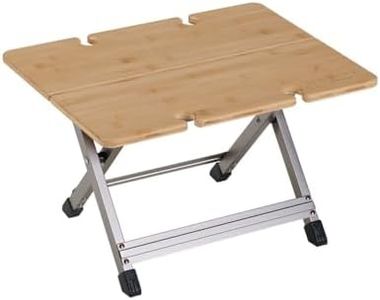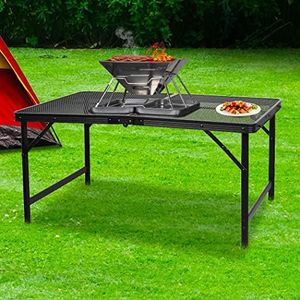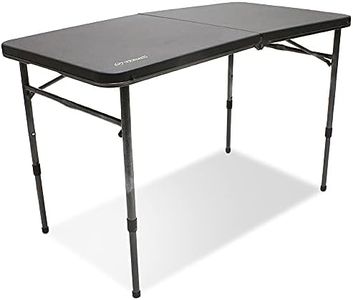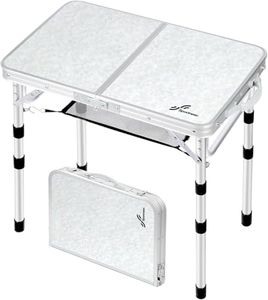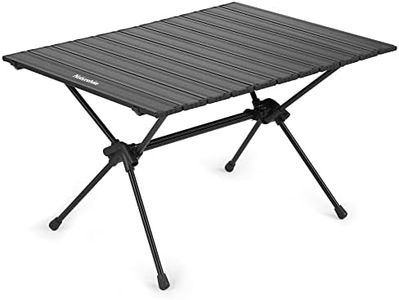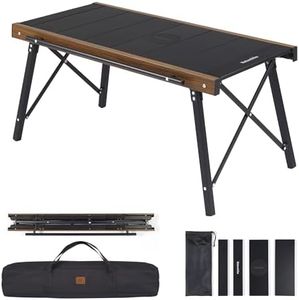We Use CookiesWe use cookies to enhance the security, performance,
functionality and for analytical and promotional activities. By continuing to browse this site you
are agreeing to our privacy policy
10 Best Camping Tables
From leading brands and best sellers available on the web.Buying Guide for the Best Camping Tables
Picking a camping table is all about finding the right balance between portability, size, weight, and durability to suit your outdoor activities. Whether you need a small table for solo backpacking, a sturdy base for family meals, or an easy-to-carry coffee table for the beach, knowing how to match your needs to the key features of camping tables will help you make a smart choice. Always think about where you'll use the table, how many people will use it, and what you'll put on it.Size and Surface AreaThe size of a camping table determines how much space you have for food, cookware, games, or other gear. Tables come in small, medium, and large sizes. Small tables are often compact and ideal for one or two people or for drinks and snacks. Medium tables fit 2–4 people for meals and offer a reasonable work surface. Large tables work well for groups or families and can handle multiple items. Consider what activities you want to do with your table; pick a size that comfortably fits your group but is not unnecessarily bulky.
Weight and PortabilityWeight and portability determine how easy it is to carry and pack the table with the rest of your camping gear. Ultralight tables often weigh just a couple of pounds and are great for backpacking or hiking, though they tend to be smaller and less sturdy. Medium-weight tables strike a good balance for car camping, while heavier tables, though harder to transport, offer more stability for larger groups and more demanding uses such as cooking. Match the portability of your table to how you'll travel and how much you’re comfortable carrying.
Height and AdjustabilityTable height affects comfort while sitting or standing and can influence how you use the table. Some camping tables offer fixed heights suitable for either sitting or standing, while others are adjustable to accommodate different chairs or activities (like dining versus food prep). Lower tables are good as side tables or for use on picnic blankets, while taller tables can be used with camp chairs. It’s best to choose a table whose height matches how you plan to use it and the seating you have.
Material and Build QualityCamping tables are commonly made from aluminum, steel, plastic, or a combination. Aluminum tables are lightweight and weather-resistant, steel tables are heavier but very strong, and plastic tables are lightweight but may not hold up as well over time. Build quality also matters for longevity and stability, especially on uneven outdoor surfaces. If you need something durable for rough use, pick a well-built table with sturdy joints and weather-resistant surfaces.
Ease of Setup and PackingHow easy it is to set up and pack away the table can make a big difference, especially if you'll be moving campsites or setting up in low light. Tables with simple folding or roll-up designs are quickest to assemble, but may offer less stability. More complex tables may be more stable but take longer to set up. If convenience matters, look for tables with straightforward mechanisms and minimal parts to lose.
Weight CapacityWeight capacity refers to how much weight the table can safely hold without bending or collapsing. Light tables may only support a few pounds, good for snacks or light gear, while sturdier models handle cooking gear, full meals, or heavy objects. Consider what you’ll put on the table to determine the strength you need.
